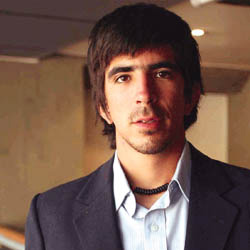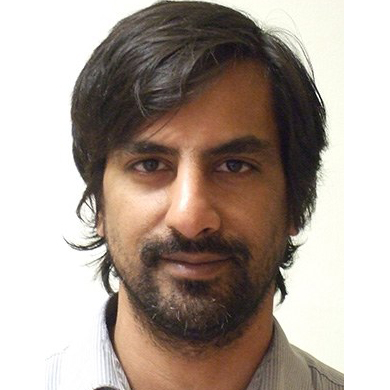Open Source Autonomous Imaging Station for High Schools, Universities & DIY Science Communities
We proposed to create a set of tools for scientific research, engineering and teaching biology
at the scale of whole colonies and entire plates. First, we designed and built a standalone
tool for imaging and analysing fluorescence in biological samples at three different spectra
and at a range of scales from individual colonies to whole plates (easily extensible to plant
cells and even whole organisms such as C. elegans and Marchantia spp). The system is
self-contained and autonomous, including hardware and software for image capture,
programmed sequences (e.g. timelapse), and quantitative analysis of samples. We also
developed a simple genetic toolkit for the production of fluorescent and pigmented bacteria
complementing the device. We have optimized genetic construction protocols and adopted
fluorescent markers that can be used with 470 nm single excitation. Altogether, our system
allows for construction and integral experimentation with hardware, software and genetic
instructions from off-the-shelve, open access and distributed resources.
Project publication
Low cost and open source multi-fluorescence imaging system for teaching and research in biology and bioengineering (2017). Isaac Nuñez, Tamara Matute, Roberto Herrera, Juan Keymer, Tim Marzullo, Tim Rudge, Fernan Federici. DOI: https://doi.org/10.1101/194324
The Idea
The growing availability of prototyping tools such as 3D printers and Laser Cutters (for example in MakerSpaces), combined with the rapid growth of online libraries where scientists can easily share design files (e.g. GitHub and Docubricks) has led to the birth of the “Open Science” movement. In this effort, scientific tools are developed collaboratively, with scientists in labs across the world contributing and modifying designs that are curated publicly online. Recent achievements of the Open Science approach include 3D manipulators, amplifiers, pipettes, PCR machines, gel electrophoresis machines, and Microscopes.
Backyard Brains has contributed to these achievements by developing open technologies for neuroscience and electrophysiology research and teaching, including a smartphone microscope. Synthetic biology has also played a key role in the Open Science movement by promoting the development of open frameworks for engineering biology. iGEM, for instance, has included a hardware track in the competition.
At its most accessible level synthetic biology deals with the engineering of genetic circuits that are implemented in bacteria. Most of the characterization techniques are based on fluorescent measurements obtained from expensive equipment such as fluorimetric plate readers, flow cytometers and fluorescence microscopes. In addition, the study of genetic processes taking place at a larger scale such as in large bacterial populations growing on solid media or whole plants has remained less explored due to the lack of appropriate equipment. Low cost imaging devices for studying and engineering these biological processes are still needed. These devices could be useful for engineering and characterizing colonywide behaviour, morphogenetic processes, microbial biofabrication, distributed computing, microbial consortium engineering, among many others.
Here we propose to develop a standalone tool for imaging and analysing fluorescence in biological samples at a range of scales from individual bacteria, through colonies, plant cells and even whole organisms such as C. elegans. The system will be selfcontained and autonomous, including hardware and software for image capture, programmed sequences (e.g. timelapse), and quantitative analysis of samples. We also propose the development of a simple genetic toolkit for the production of fluorescent and pigmented bacteria complementing the device. The entire system, optics, frame, electronics, genetic resources and software will be open source. This robust and affordable package will enable independent, inexpensive experiments and observation for scientists in emerging scientific cultures in Latin America as well as in schools, colleges and universities. This project also wishes to highlight the benefits of employing an open framework for academic collaborations that seek to deliver Open Access resources and information. We have formed an industry partnership with the Open Source company Backyard Brains (TM), which has significant experience in creating and distributing open educational and research technology for neuroscience in Latin America and worldwide (backyardbrains.com, backyardbrains.cl).
The Team
Dr Fernan Federici,
Research Group Leader, Pontificia Universidad Católica de Chile, Chile
Dr Tim Rudge,
Research Group Leader, Pontificia Universidad Católica de Chile, Chile
Dr Neil Pearson,
Postdoctoral Researcher, Earlham Institute, Norwich
Dr Tim Marzullo,
Co-Founder and Engineer at Backyard Brains Inc. (backyardbrains.com), Michigan, US
Dr Juan Keymer,
Research Group Leader, Pontificia Universidad Católica de Chile, Chile
Project Outputs
Project Report
Summary of the project's achievements and future plans
Project Proposal
Original proposal and application
Project Resources
1) Publication on BioRxiv. 2) Design and software files can be found on GITHUB and DocuBricks.com. 3) instruction file for Analysis of timelapse data from Raspiscope.
Open Source Autonomous Imaging Station - Report
introduction
We proposed to create a set of tools for scientific research, engineering and teaching biology at the scale of whole colonies and entire plates. First, we designed and built a standalone tool for imaging and analysing fluorescence in biological samples at three different spectra and at a range of scales from individual colonies to whole plates (easily extensible to plant cells and even whol e organisms such as C . elegans and Marchantia spp) (Fig. 1). The system is self-contained and autonomous, including hardware and software for image capture, programmed sequences (e.g. timelapse), and quantitative analysis of samples.
Fig. 1: Imaging station
We also developed a simple genetic toolkit for the production of fluorescent and pigmented bacteria complementing the device. It is worth to note that a series of fluorescent proteins have been screened in order to find those that can be excited with a single illumination source (470 nm LEDs) and detected with the same filter (amber acrylic) (Fig. 2). Being able to excite different probes with a single setup reduced significantly the cost and time of fabrication since mobile parts (e.g filters) are no longer needed.
Fig. 2: sfGFP, mBeRFP and CyOFP fluorescent proteins under 470 nm excitation.
We have created a set of vector that combine Golden Gate and Gibson assembly methods for low cost fabrication of multiple genetic functions. These vectors, along with the 470nm-compatible fluorescent probes, regulatory sequences, response regulators and genes coding for cell-to-cell signalling components, are compatible with methods resources and methods widely used by the synthetic biology community. They use conventional sequences and type IIs enzymes to easily compile transcriptional units (ie functional units of protein expression) from growing libraries of standardized subcomponents being constantly developed by different labs around the globe (e.g CIDAR MoClo, iGEM MoClo parts and PUC level 0 parts). This approach not only simplifies considerably the protocols for DNA fabrication but also promotes new practices such as co-development and the use of distributed resources. These tools can be therefore maintained, expanded and improved by collaborative communities of distributed around the globe. This means tools developed in one high school or lab are useful and utilizable by another group elsewhere, and vice versa. Of course, this relies fully on being able to share information and resources under open source licenses (eg OMTA).
Fig. 3: low cost setups for growing bacterial plates. Bed-heating device (USD 20).
We also combined this method with Gibson assembly for multigene construction. Once transcriptional units have been assembled by Golden Gate, PCR-based assembly are used for building multigene constructs (Torella et al., 2014). We are optimising the entire protocol to use the fewest number of expensive equipment or replace them with low cost alternatives. For instance, we have adapted bed-heating blankets for growing bacteria overnight and successfully used methods of DNA transformation that doesn´t require refrigeration of cells (Fig. 3).
Open source code has been also developed to run and analyze experiments (https://github.com/SynBioUC/Raspiscope.git), providing a round package for teaching software, hardware and biology in an integrated manner. All together, our tools allow running one week-long workshops that cover a wide range of concepts (Fig. 4).
Fig. 4: Workshops in primary schools in Puerto Natales (top) and Valdivia (Bottom), Chilean patagonia.
The entire system, optics, frame, electronics, genetic resources and software are open source. Design files will be distributed in our github and a full documentation will be done on docubricks.
This project also wishes to highlight the benefits of employing an open framework for academic-industry collaborations. We have formed a successful partnership with the Open Source company Backyard Brains (TM), which has vast experience in creating and distributing open educational and research technology for neuroscience in Latin America and worldwide (backyardbrains.com, backyardbrains.cl).
Outputs
1) Library of genetic parts and set of vectors.
2) Github public repository of open source: hardware designs, control software (python), analysis and teaching tools (Jupyter notebooks).
3) Workshops using the developed resources:
- Puerto Natales, school, community
- Valdivia, Universidad Austral de Chile, students (university and highschool) and community.
4) Draft paper in preparation for submission to an open journal
Future plans
We believe this robust and affordable package will enable independent, inexpensive experiments and observation for scientists in emerging scientific cultures in Latin America as well as in schools, colleges and universities. We would like to produce a few imaging stations and distribute them to schools, artists and labs along with the accompanying genetic resources.
Our plan is to use the remaining funds to build those devices.












